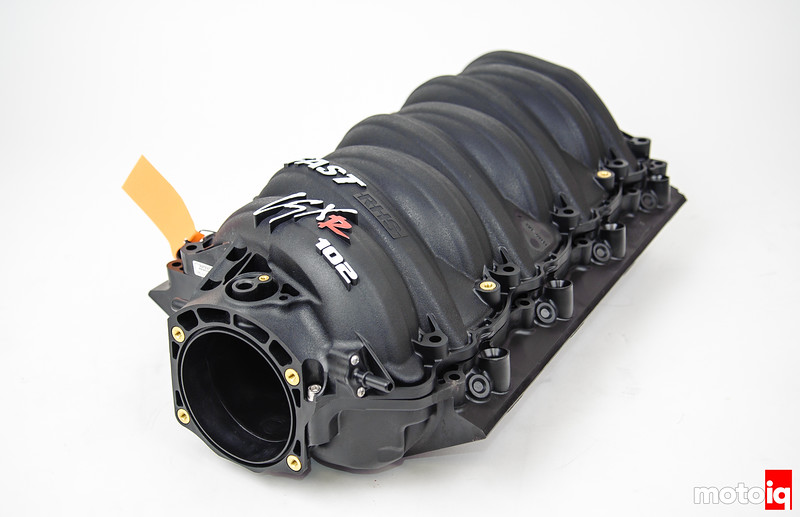
Oil starvation is an issue with LS engines when used on drift cars that can pull serious G forces. A modern pro drift car can pull over 2.2 lateral G’s on banked turns and 1.5 g’s on flat turns. The S13 pulled 1.8 G’s in banked turns and 1.3 g’s on the flats in its heyday. This is easily more than a wet sump can handle. The Canton Pan has vertical and horizontal baffles with one-way trap doors to help keep oil around the pump pickup. We will also be running a Canton Accusump to help keep oil pressure in the car.

Canton’s Accusump is a pressurized accumulator that has several seconds of pressurized oil on hand if the oil pump pickup sucks some air. It is the poor mans dry sump and can literally be an engine saver when an engine sees momentary drops in oil pressure due to cornering G’s.

Since LS engines are normally rear sumped with external transfer lines, we used this Canton adaptor to bypass this where we could plumb to a remote filter.

In order to get better oil control and a quicker return of oil to the sump, we used this windage tray from Mast Motorsports. The windage tray clears cranks with big strokes and strips the oil cloud surrounding the crank and sends it to the pan. Windage trays help reduce losses by keeping the air around the crank more oil free so the crank is not impeded by oil mist. Not surprisingly windage trays help free up 5 or more hp, reduce oil temperatures (up to 10 degrees), reduce oil consumption and reduce the amount of entrapped air in the oil for better lubrication.

To help ensure that our bearings have a good supply of oil, we are using this Melling’s 10296 high pressure and volume oil pump. This pump has an increase of 18% over the stock oil pump and a 10% increase in pressure. The housing is CNC machined for the larger pump gears then hard anodized for long life. The pressure relief valve has a removable plug and the standard spring can be interchanged for an optional lower pressure one that is supplied with the pump.




7 comments
Do you think using thermal paste (ala CPUs) would help increase heat transfer on the main bearings?
Might aid in bearing spinning. Usually, engine builders advocate a tight fit on the main saddle for best heat transfer.
it won’t one bit: It will just desolve in oil. Let alone the chunks that get stuck at the oil pickup or the bearings. It just will not work if you really want to remove heat: Graphite paper. Bit that will nog keep the bearing in place. A graphite-silicon based sealer will most likely transfer heat a little less, but will be more resillient to spinning bearings.
Then again: Bearings normally won’t spin that much, unless there are either opposing forces ( flat 4’s for instance) or when the stroke gets to large compaired to the connecting rod. It isn’t so much extra power as it is the rod stroke length.
Mike – any thoughts on using a stock 4.8 crank to reduce the stroke and increase the rod length?
For a road racing or circle track car sure. A drift car needs grunt so I don’t think I would ever destroke one. Mange rod ratio, yes but not destroke. For Dai Yoshihara’s engines, I run a big 4.250 stroke for grunt but also run a super long 6.350 rod with a tall deck block. This gives a stroke to rod length ratio of 1.494:1 which is within the realm of OEM production engines yet still packs a bunch of displacement into a small package. One of our older blocks with a big bore gives us 477 cubic inches!
Mike – What is the best roller rocker / shaft roller rocker option for a stock ls3 head?
For drifting with lower rpm, probably Crower.